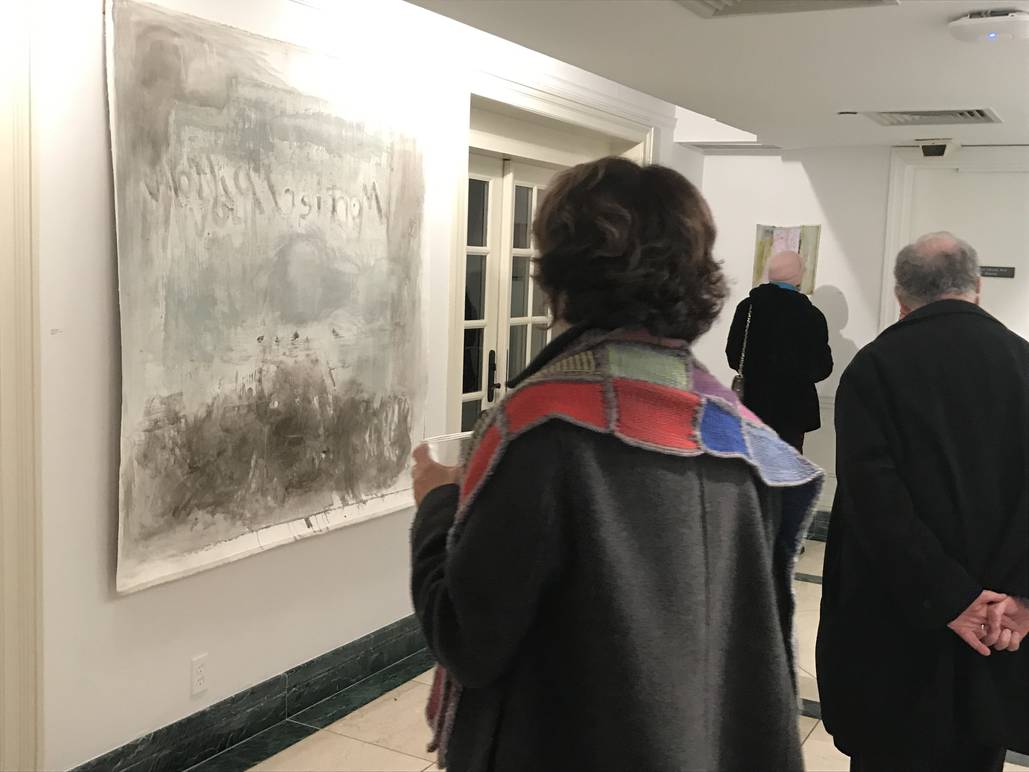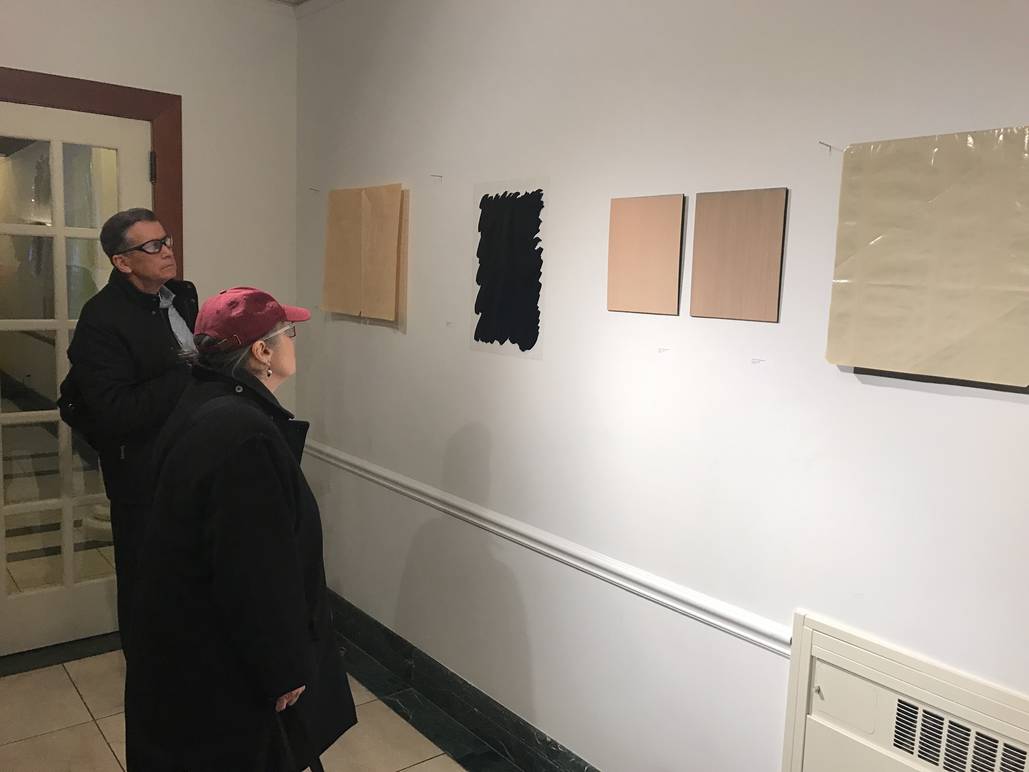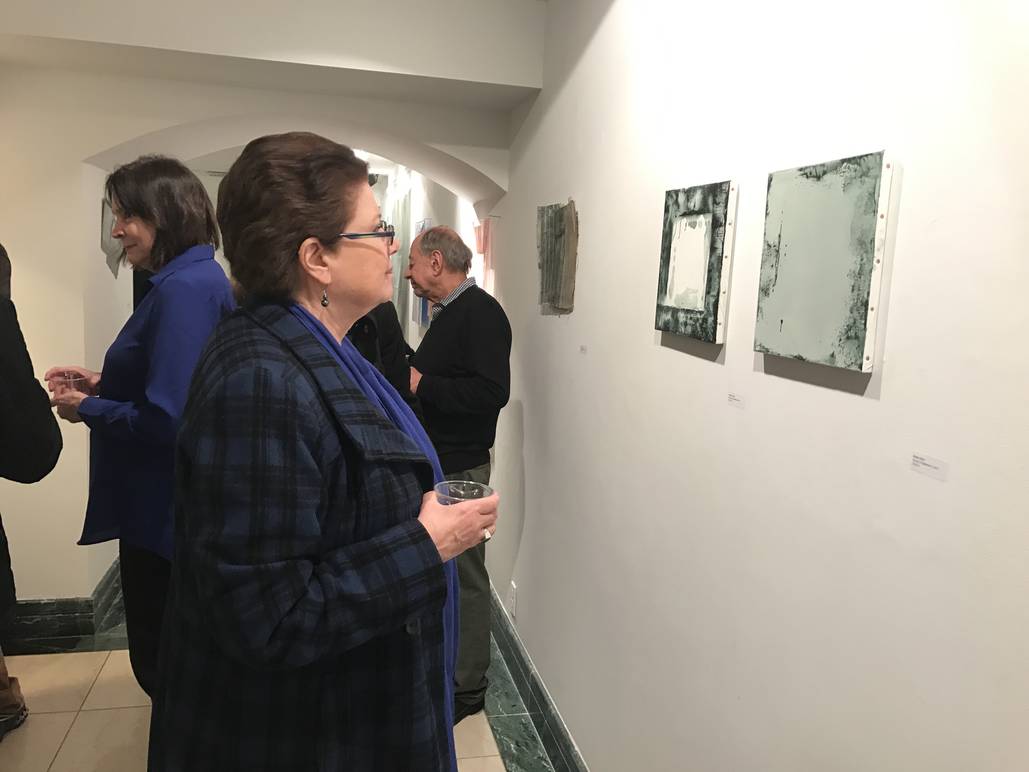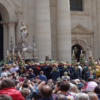‘Seeing Through’ Art Exhibit at Casa Italiana
Recalling the legacy of Alberti’s window—a conceptual method for renaissance artists to understand perspective—to the bold masterpieces of the modern era like Duchamp’s The Large Glass, the idea of “seeing through” has influenced artists up to the present day. The “Seeing Through” exhibit at Casa Italiana Zerilli-Marimò showcases work from two such painters, Antonio Scaccabarozzi (Merate, Italy 1936-2008) and Marthe Keller (New York, 1948). Conceived and curated by contemporary art historian Elisabetta Longari, the exhibit is on display until March 16 and allows viewers to experience how artists of varying perspectives address and employ this principle.
The Artists Side by Side
Though Scaccabarozzi and Keller belong to two different artistic generations, had different cultural upbringings, and lived on different continents, their work shares a striking likeness. They both move from similar visual problems and suggest answers that unexpectedly relate to each other. Most importantly, they base the visual dynamics of their works on the experience of “seeing through,” tethered to their shared interest in ideas pertaining to painting “beyond the frame.”
In conversation with Longari, Keller compared her own process with Scaccabarozzi’s: “My generation was always battling this problem of space in painting and how to deal with it. The layers of transparency are a way of looking into the space of painting without really disturbing it too much.” She continued, “It’s a slightly different approach. He’s coming at it from one side, I’m coming at it from another, but we’re kind of meeting in the middle. I think he’s a little purer in a way and I allow a lot more garbage to get into my work. I use chance a lot and let things happen, whereas he has a plan and he follows it. He’s a little more conceptual perhaps.”
Each artist experiments with different approaches and materials, including the use of artificial shims that look like borderline invisible plastic sheets. These elements hang in the balance between presence and absence, enhancing the sensorial effect of the painted surface and creating a dialect between transparency and opacity. The surfaces are often deconstructed into overlapping layers, within which the inherent properties of color and painterly gestures create a theater of aggregations and separations.
Keller and Scaccabarozzi also focus on the potential for instability as it relates to perception. They seek out liminal spaces and intervals, subtle nuances that oscillate between visible and invisible. Their paintings are at once annunciations and affirmations of the medium of paint itself. They are presences and predictions in the making.
About the Artists and Curator
Scaccabarozzi produced and exhibited for over four decades, beginning in 1965 until his unexpected death in a motorcycle accident in 2008. However, his notable exhibitions continue to take place all over Europe. Recent shows have been at Galerie Hoffmann, Freidberg, Germany; Foundation Antonio Calderara, Italy; Nuova Galleria Morone, Milan; P420, Bologna; and Scaramouche, NY.
Keller is based in New York City, though she lived in Rome in the 1960s and returns to Italy annually to work. She studied painting with Sal Scarpitta at the Maryland Institute and made wall drawings for Sol Lewitt. Her first significant shows were in New York and Palermo, Sicily in 1982, and she has had over 22 solo shows since. Her artworks are featured in many notable collections, including the Metropolitan Museum of Art, the MoMA, the Whitney Museum, and the British Museum. She also co-founded the BAU Institute arts residency and is an Adjunct Professor at Hunter College in NYC.
Longari is an art historian and curator based in Milan. She teaches Contemporary Art History at the Brera Academy of Fine Arts, Milan, and Phenomenology of Styles at Catholic University, Brescia. She is a prolific writer of essays, books, and catalogs, such as Sironi e la V Triennale di Milano. She has curated numerous one-person and group exhibitions in museums and galleries internationally, including José Barrias at Gulbenkian Foundation, Lisbon, 1996, and Pelanda dei Suini at Testaccio, Rome, 2016.










































i-Italy
Facebook
Google+
This work may not be reproduced, in whole or in part, without prior written permission.
Questo lavoro non può essere riprodotto, in tutto o in parte, senza permesso scritto.